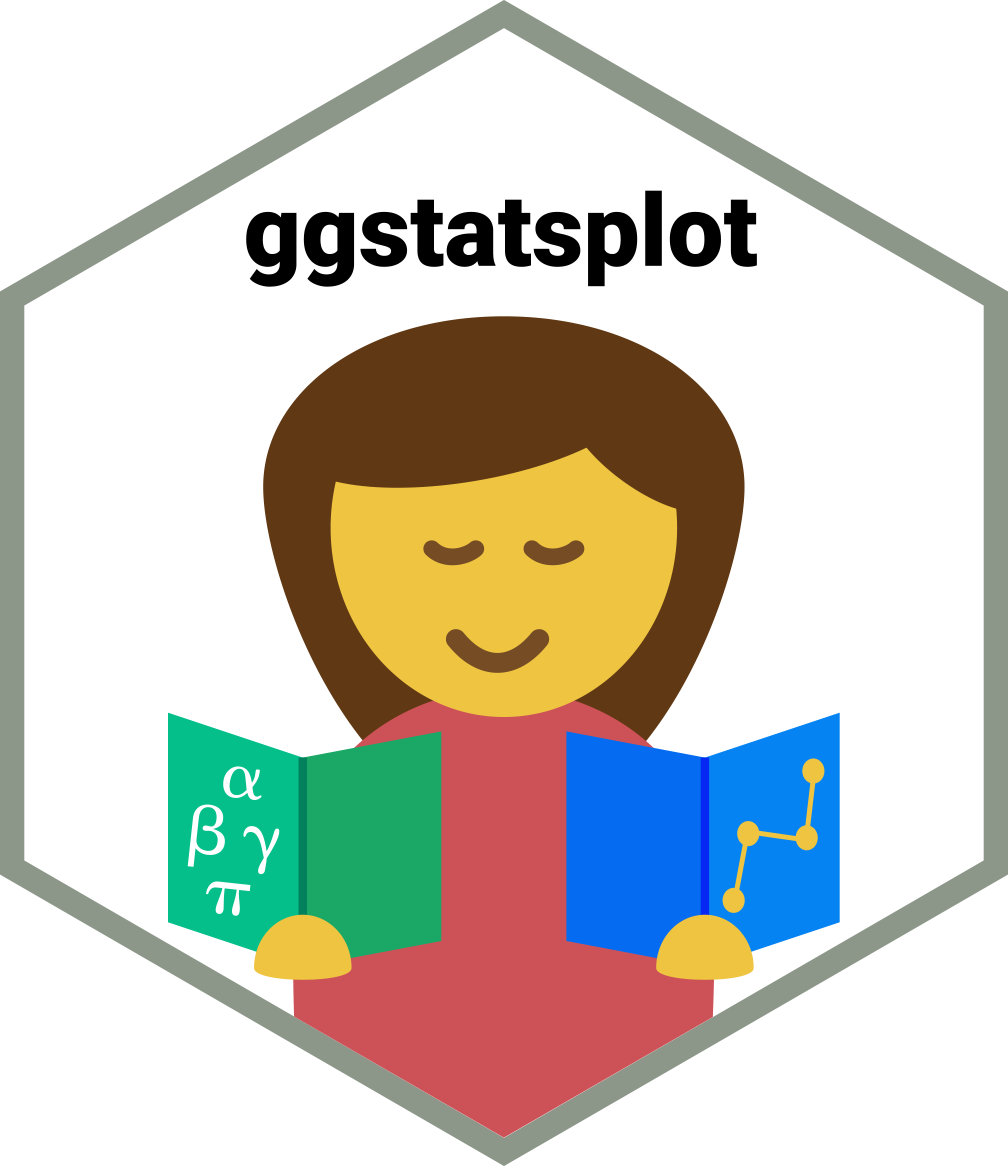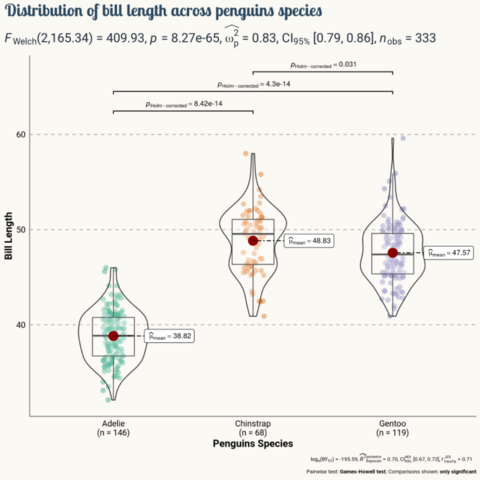Add statistical details to charts with ggstatsplot
The ggstatsplot package in R is
an extension of the ggplot2
package, designed to facilitate the creation of visualizations
accompanied by statistical details.
This post
showcases the key features of ggstatsplot
and provides a set of graph examples using the
package.

{ggstatsplot}











